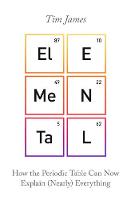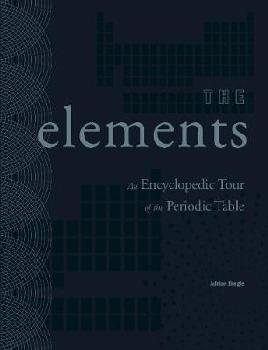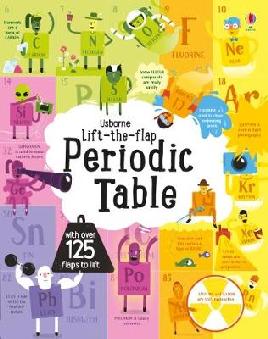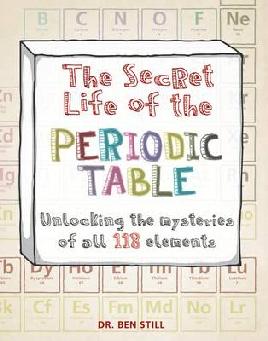How Henry Likes Beer By Cupfuls. Never OverFlowing Never Naturally Mgouldy Although Sister Patricia Says Chlorine Argon Kills Cats. Many moons ago, that was the mnemonic we used to remember the first twenty elements of the periodic table (I think I've got a mgouldy memory though). 2019 is a time to re-remember all that, because it is the International Year of the Periodic Table:
The Periodic Table of Chemical Elements is one of the most significant achievements in science, capturing the essence not only of chemistry, but also of physics and biology. 1869 is considered as the year of discovery of the Periodic System by Dmitri Mendeleev. 2019 will be the 150th anniversary of the Periodic Table of Chemical Elements and has therefore been proclaimed the International Year of the Periodic Table of Chemical Elements (IYPT2019) by the United Nations General Assembly and UNESCO. (IYPT2019)
When Russian chemist Dmitri Mendeleev first published the periodic table in 1869, 62 chemical elements were known. In the 150 years following, scientists have increased that number to 118.
Today could be called the birthday. On 6 March 1869, Mendeleev made a presentation to the Russian Chemical Society, entitled "The Dependence between the Properties of the Atomic Weights of the Elements," which described elements according to both atomic weight and valence (Information from 1st periodic table is presented, March 6 1869).
One of the fascinating things about the periodic table is how it posited the existence of elements before they were even discovered. For an absorbing introduction, listen to Sarah Masters on RNZ talking about The curious history of the periodic table - this is an eye(ear)opener about how it all happened, and how the periodic table has grown since.
As always, we like a New Zealand connection. Well, Rutherfordium Rf is element 104 and was discovered in 1964, and named in honour of New Zealand chemist Ernest Rutherford (my great grand-father's cousin). In Rutherfordium - Elementary my dear Ernest , John Campbell observes that the naming:
... was most fitting as it was Rutherford who had first explained the nature of radioactivity, that one element was decaying into another. That concept had been such an advance in science that Rutherford had been awarded the 1908 Nobel Prize in Chemistry. Also he named the alpha particles.
Fun periodic table stuff - back in 2011, chemists across the country knitted a giant periodic table of the elements in celebration of the International Year of Chemistry.
Knitted periodic table of elements, at @AucklandUni's Science Centre (Building 301) @RKPriestley @adzebill pic.twitter.com/IUF6w3lA
— Richard Easther (@REasther) March 12, 2012
The periodic table was a massive milestone in science, and it was also a design triumph. Think of the multifarious uses you've seen it put to - it's on posters, shower curtains, mugs (got one). There's a great sum up of its classic design and pop culture influence in The Conversation.
Periodic Table shower curtains - it had to be done. #chessshowercurtainsalsoordered pic.twitter.com/a4zeq46wVy
— Boarding (@Cressbrook_Sed) February 24, 2019
It's also been used in clever ways to "periodicise" other topics. I'm a fan of the Periodic Table of Synthpop.
But back to the OG Periodic Table. Here are some modern views. This pictorial periodic table by Keith Enevoldsen shows the element’s name, symbol, and atomic number, alongside a drawing of one of the element’s main human uses or natural occurrences
This pictorial periodic table by Keith Enevoldsen is part of a project to help people retain scientific information https://t.co/gKD8y4D9g2 pic.twitter.com/s0uqNC2oqB
— Domus (@DomusWeb) September 16, 2017
This version shows an environmental resources perspective on the elements in the periodic table:
Dmitri Mendeleev's #PeriodicTable is 150 years old today. Elements have been used to make everything from rocket fuel to raincoats, but our over reliance on some is starting to put a strain on resources. @fedfragapane's #infographic explains which are under threat. pic.twitter.com/RNBiH6c871
— BBC Science Focus Magazine (@sciencefocus) March 1, 2019
New Scientist looks at the periodic table problems left to solve, and a potential redesign:
The periodic table is 150 years old this week, but it still remains unfinished. Here are three problems we need to solve https://t.co/W42nLEzw7H pic.twitter.com/lMvXmDdSAP
— New Scientist (@newscientist) February 27, 2019
Three reasons why the periodic table needs a redesign https://t.co/yIVzbflGt8 pic.twitter.com/pdh7dpU0Fy
— New Scientist (@newscientist) February 26, 2019
Find out more about the periodic table
- Find resources about the periodic table in our collection.
- Find books and articles about the periodic table in eResources Discovery Search.
- Explore the IYPT2019 site to Discover Periodic Tables (chemical elements, atomic weights, isotopes).
- Listen to Sarah Masters: The curious history of the periodic table RNZ 19 January 2019.
- Listen to Tales from the Periodic Table on RNZ. You can subscribe to the Elemental podcast for free, at Apple Podcasts, Spotify, Stitcher and RadioPublic.
- Read a Biography of Dmitri Mendeleev in Britannica.
International Year of the Periodic Table
- Visit the IYPT2019 website.
- Like International Year of The Periodic Table of Chemical Elements - Iypt2019 on Facebook.
- Follow IYPT2019 on Instagram.
- Follow IYPT2019 on Twitter.









Add a comment to: Happy 150th birthday, Periodic Table!